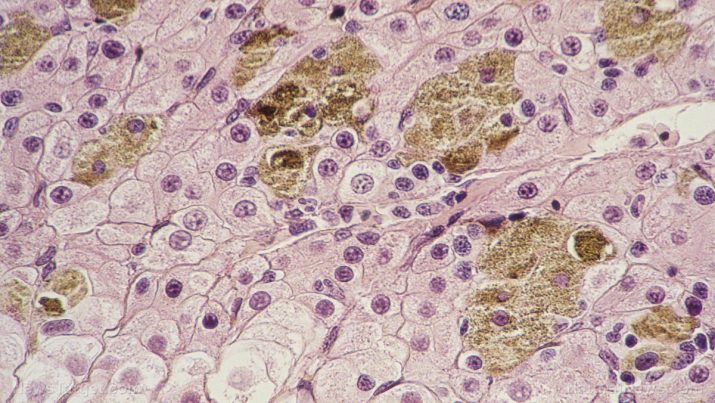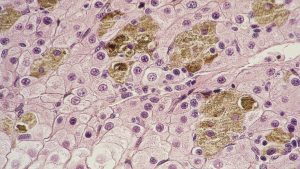
Lysosomal disorders – causes, side effects and treatments at NaturalPedia.com
Thursday, May 10, 2018 by Ralph Flores
http://www.naturalpedia.com/lysosomal-disorder-causes-side-effects-and-treatments-at-naturalpedia-com.html

Lysosomes are parts of the cell that are responsible for breaking down complex nutrients which the cell uses in various functions. Lysosomal disorders (also called lysosomal storage disease) are conditions where the organelles do not properly function and cause cellular dysfunction and abnormalities.
Currently, scientists have identified more than 50 lysosomal disorders, which are classified by substrate.

Known risk factors and symptoms of lysosomal disorders
Each disorder has its own unique signs and symptoms. However, all of them are progressive, that is, they get worse over time.
Common lysosomal diseases, as well as their hallmark symptoms, are listed below.
- Aspartylglucosaminuria: The condition, which is commonly seen in newborns, is marked by the presence of recurring infection, diarrhea, and hernias. Facial features become coarse later on, with some having an enlarged tongue (macroglossia) and liver (hepatomegaly).
- Batten disease: This refers to progressive neurological disorders that result in the buildup of the fatty substance lipopigment in the brain. The disease is common in people from Scandinavia, and it can lead to a rapid decline in vision and a deterioration of intellect and brain function.
- Cystinosis: This disorder primarily affects the kidneys and eyes, and it is characterized by an increased sensitivity to light, faulty kidney function, and evident growth retardation.
- Fabry disease: People with this condition experience a severe burning pain in their hands and feet, as well as a decrease in the production of sweat, apparent discomfort in lower temperatures, and reddish to dark-blue rashes in the skin.
- Gaucher disease (types I, II, and III): This is the most common lysosomal storage disorder. Depending on the type, symptoms can range from an enlargement in the liver and spleen (type I), involuntary muscle spasms and the loss of motor skills (type II), and mental deterioration and the inability to coordinate voluntary movement in children (type III).
- Glycogen storage disease II (Pompe disease): The condition, which can either be present in infants or appear in adults as a delayed onset, is marked by progressive weakness of the muscle, heart disease, and respiratory difficulties.
- GM2-Gangliosidosis type I (Tay Sachs Disease): A hallmark symptom for this disorder is the development of cherry red spots in the back of eyes. People with Tay Sachs disease also experience an exaggerated response to sudden, loud, noises.
- GM2-Gangliosidosis type II (Sandhoff disease): While it is clinically indistinguishable from Tay Sachs disease, the first symptoms of this disorder appear in babies that are three to six months old.
- Metachromatic leukodystrophy: This disorder is first marked by the development of an unsteady gait in children, which progresses into seizures and mental retardation.
- Mucolipidosis types I, II/III and IV: Depending on the type, symptoms of this lysosomal storage disorder are involuntary muscle contractions (type I), abnormal growths in the skull and face (type II), severe joint deterioration and scoliosis (type III), and severe mental retardation and lack of muscle coordination (type IV).
- Mucopolysaccharide storage diseases (Hurler disease and variants, Hunter, Sanfilippo Types A,B,C,D, Morquio types A and B, Maroteaux-Lamy and Sly diseases): Also called the MPS diseases, these are characterized by bone and joint deformities that impede movement. With the exception of Sanfilippo disease, MPS diseases adversely affect growth.
- Niemann-Pick disease types A/B, C1 and C2: This group of inherited disorders affects how fat is metabolized in the body, which results in an enlargement of the liver and spleen.
- Schindler disease types I and II: Type I, which occurs in newborn children, results in them losing previously learned skills, including mental and physical coordination. Type II, the adult-onset form, results in the presence of wart-like discoloration, coarsening of the facial features, and intellectual impairment.
Most lysosomal storage diseases are caused by an inborn error of metabolism: The lysosome either lacks or does not have enough of a certain enzyme needed to break down the macronutrient.
Body systems affected by lysosomal disorders
Lysosomal disorders are progressive multisystem conditions, which can manifest in early childhood to even in adult life.
Food items or nutrients that may prevent or relieve lysosomal disorders
For the most part, lysosomal disorders are inborn, making them difficult to deal with. However, an article in Radiant Life Catalog suggests the following food items to maintain enzyme balance and improve overall health.
- Eating raw foods, for one, increases its enzyme content – as most enzymes become ineffective above 188 F. Some food items that have high enzyme levels are grapes, figs, avocados, dates, and unrefined extra virgin olive oil, and tropical fruits such as bananas, kiwis, mangoes, and papaya.
- Consuming raw, cultured dairy is also a great way to get enzymes from milk that are usually destroyed by pasteurization.
- Raw manuka honey has potent enzymatic properties and can be used to support the immune system.
Treatment and management options for lysosomal disorders
At present, there are no known cures for lysosomal disorders. Treatment options usually cater to address individual symptoms.
Where to learn more
- Essential Oils in Common Spices Kill Sickness-Causing Germs in Food
- Chinese herbs kill cancer cells: study
- Olive oil nutrient found to HALT brain cancer cells in their tracks
- Can A Toxic Metal Found in Vaccines Cause Heart Disease?
- 5 Reasons You Need Rose Essential Oil
Summary
Lysosomal disorders are conditions where the organelles do not properly function and cause cellular dysfunction and abnormalities. Currently, scientists have identified more than 50 lysosomal disorders, which are classified by substrates. While each disorder has its own unique signs and symptoms, all of them become worse over time.
Lysosomal disorders are progressive multisystem conditions, which can manifest in early childhood to even in adult life. Currently, they have no known cure.
Sources include:
Tagged Under: Tags: lysosomal disorder





